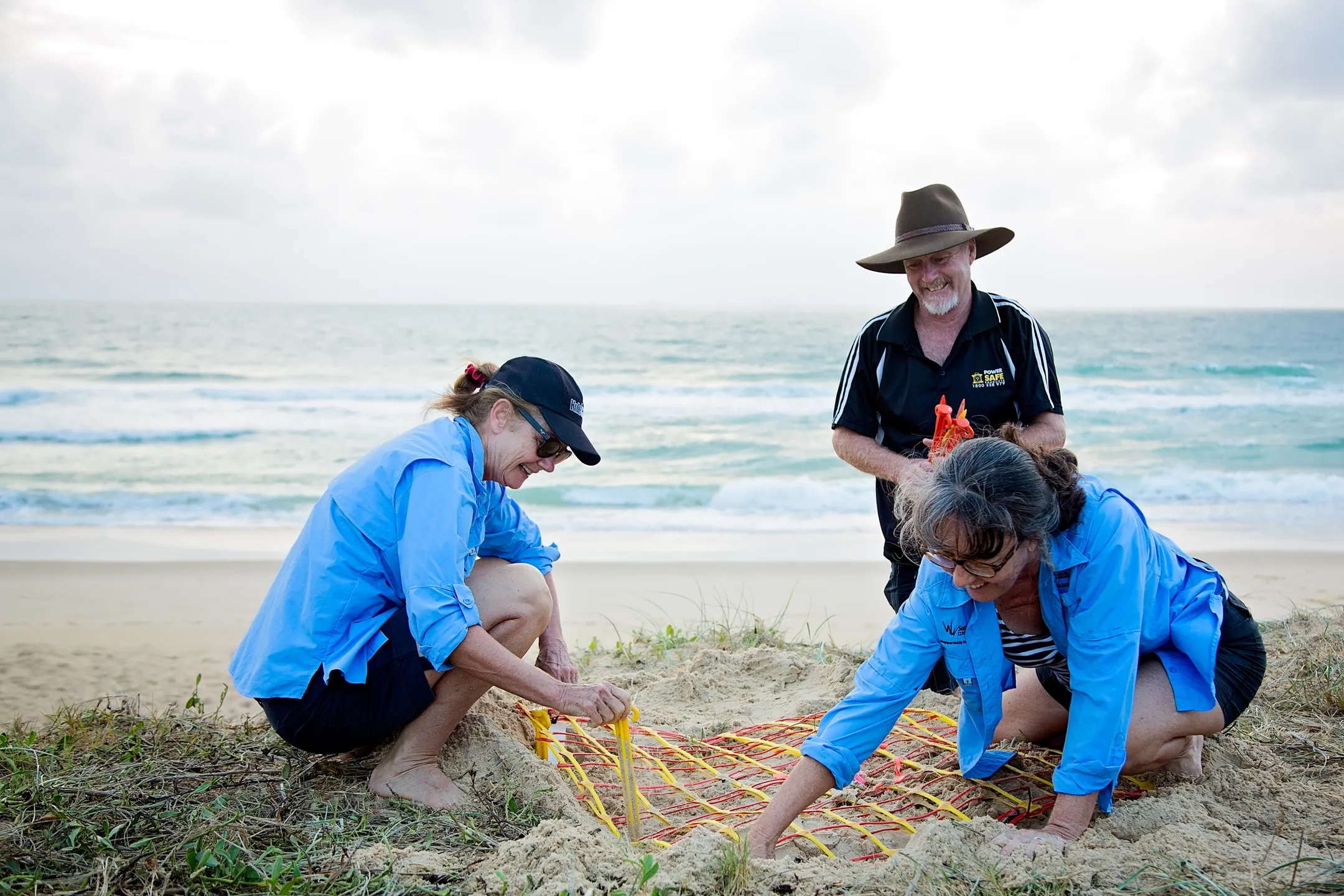Threats to marine turtles
Marine turtles face a mix of human related threats and will need our help for their populations to recover. Find out what these are and how you can help.

Every turtle matters
Marine turtles have thrived for millions of years. But have been pushed towards extinction due to a mix of human related threats.
And with only one in 1000 turtle hatchlings surviving to adulthood, every nest and every egg is critical to their ongoing survival and recovery.
We need urgent action to reduce these threats, reverse the decline and help populations to recover to the point that they are self-sustaining.
Threats to marine turtles
The most significant threats to marine turtles nesting and foraging on the Sunshine Coast beaches and offshore areas are:
Light pollution
Light pollution
An increasing threat to the survival of turtle hatchlings comes from artificial lighting from coastal development.
Marine turtle hatchlings rely on natural dark sky cues to locate the ocean. Bright artificial light near nesting beaches, and sky glow (caused by lighting within 50km of the coastline) can disorientate hatchlings, leading them away from the sea and toward inland areas and roads. This disorientation increases their vulnerability to predators, exhaustion, dehydration, and ultimately decreases their chances of survival.
Nesting disturbances: Female marine turtles return the beach at night-time to lay their eggs. Artificial lighting along the coast can deter nesting turtles from coming ashore or cause them to abandum nesting attempts. This disruption can significantly reduce the number of successful nests, negatively impacting the population.
Climate change and vulnerability
Climate change and vulnerability
Sea turtles rely on undisturbed sandy beaches for nesting, and rising sea levels due to climate change can result in the loss or erosion of nesting areas. Increased storm intensity and frequency can also damage nesting beaches and displace sand, making it unsuitable for nesting. This loss of nesting habitat can impact their reproduction success and population size.
Alternatively, climate change is leading to higher global temperatures, which can affect the sex ratio of turtle hatchlings. The temperature of the sand during incubation determines the sex of the hatchlings. Warmer temperatures can lead to more female hatchlings, causing an unbalanced sex ratio in the population, as well as a higher risk of nest failure due to extreme heat.
Marine debris
Marine debris
When turtles eat micro-plastics or get tangled up on discarded fishing nets it can cause injury, illness or death.
Habitat modification
Habitat modification
When the coastal areas that turtle nest in are built on or the plants in the dune are removed.
Recreation activates
Recreation activates
The negative impact of activities on the beach for example beach parties and fires, litter, and vehicles on beaches especially at night.
Vessel and vehicle disturbance
Vessel and vehicle disturbance
Boat’s striking turtles or boats and vehicles interrupting the turtles feeding and nesting
Terrestrial predation
Terrestrial predation
Feral and native animals, like foxes, dogs, goannas, and birds dig into turtle nests and eat the eggs.
Fisheries by-catch and shark control nets
Fisheries by-catch and shark control nets
Marine turtles accidentally caught or damaged by fishing gear.
Chemical and terrestrial discharge
Chemical and terrestrial discharge
Sediments, nutrients, and pollutants running off the land into the water.
For more detailed information, view the fact sheet on marine turtle threats (PDF, 410.05KB).
How council is responding to the threats
The Sunshine Coast marine turtle conservation plan is a long term, strategic plan to address the threats facing marine turtles on the Sunshine Coast and support them to recover. View the marine turtle conservation plan.
How you can help
We are a turtle friendly community and here are some actions to support turtle conservation:
- report turtle tracks, new nests and emerging hatchlings to our Turtle Care hotline or Coolum and North Shore Coast Care
- switch off your outside lights from 8pm as light pollution is distracting for turtles and hatchlings
- make sure you take your rubbish with you from the beach, so the turtles have a clean environment to lay their eggs in
- stay on the right track and use the authorised beach access to reach the ocean to protect turtle nesting habitat.
Subpages
Light pollution disorientates turtles. Under natural conditions turtle hatchlings emerge from nests at night and orient toward the sea relying on light cues that attract them toward the brighter horizon over the water.
